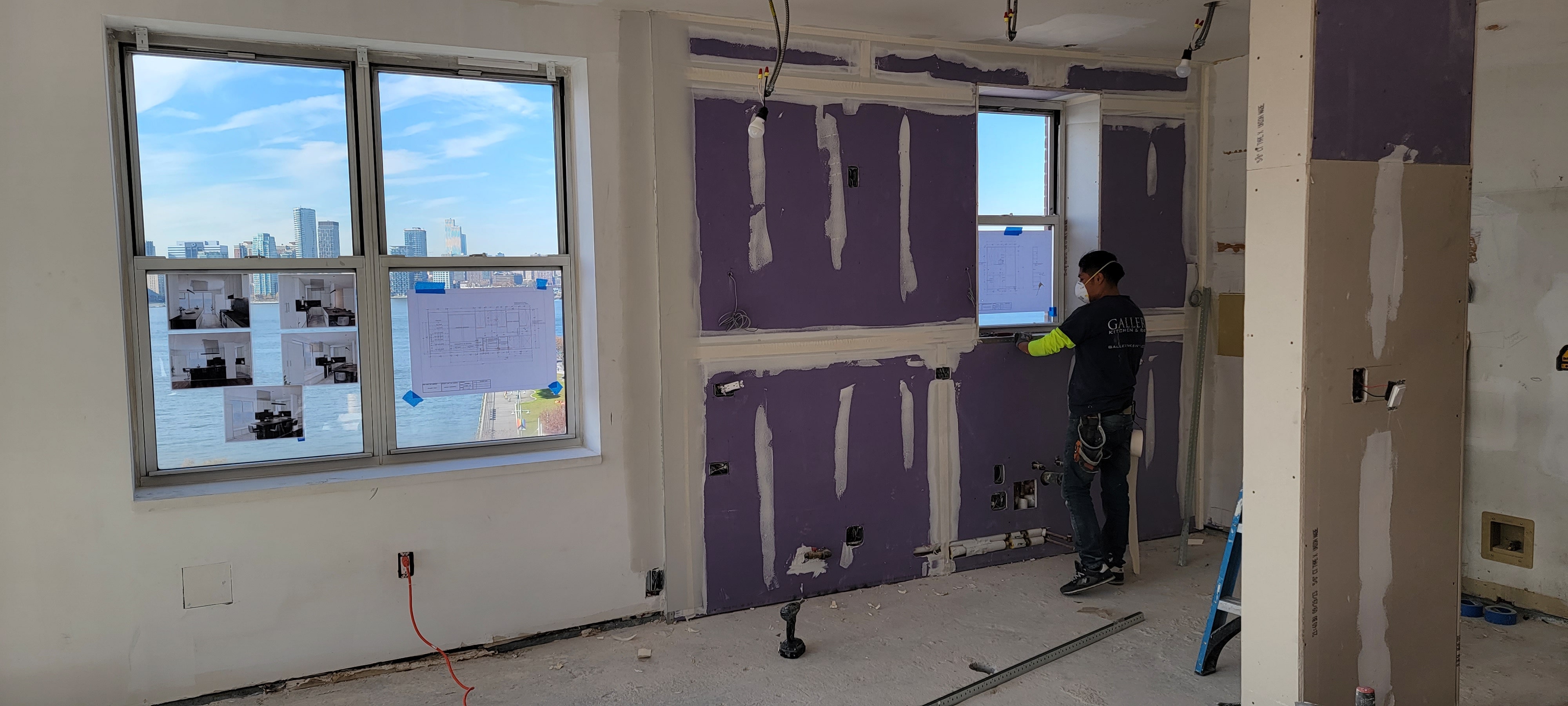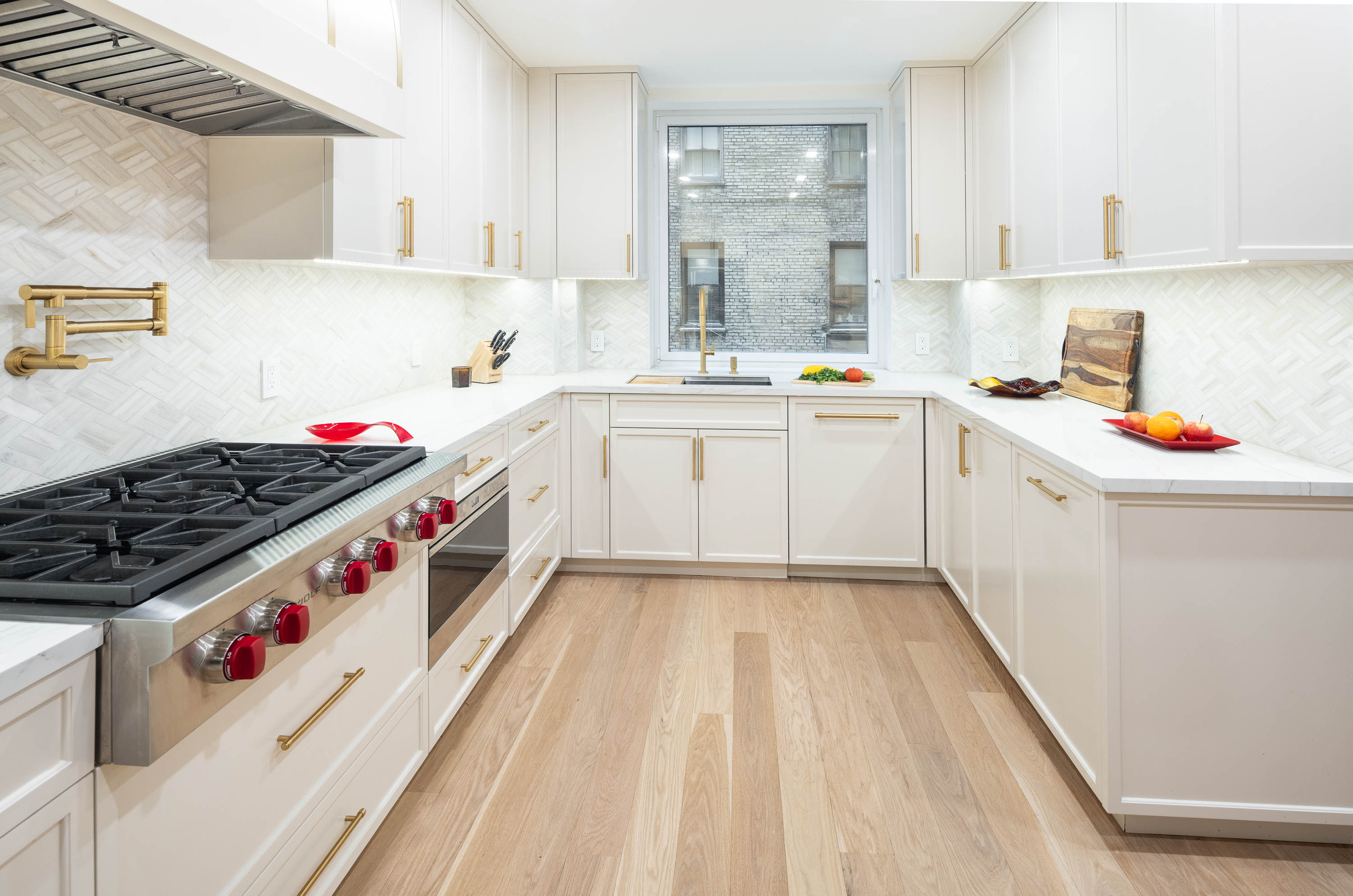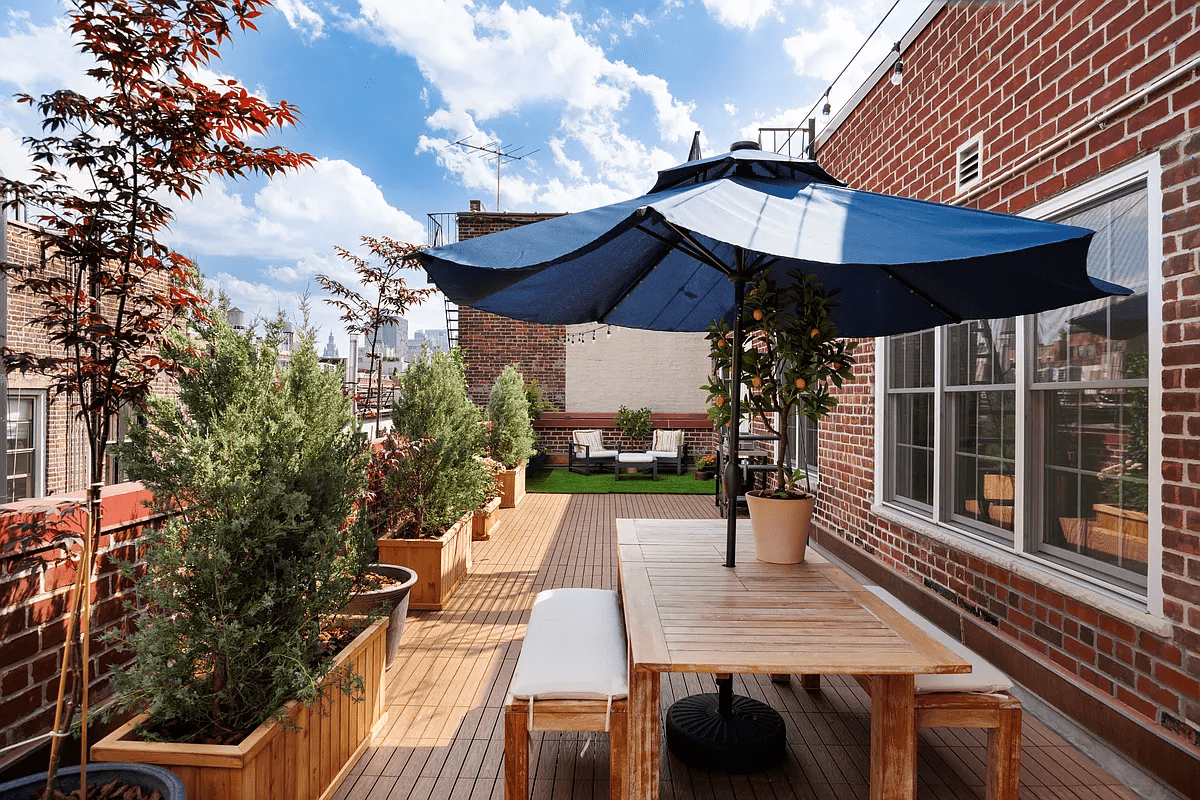6 Key Considerations When Planning A Penthouse Renovation In Manhattan
Renovating a NYC penthouse is a chance to elevate both luxury and functionality, but it comes with its own set of challenges. From window replacements to electrical upgrades, here’s what to consider before getting started.
February 7, 2025
|
-min.jpg)
6 Key Considerations When Planning A Penthouse Renovation In Manhattan
Renovating a penthouse in NYC? From window upgrades to electrical capacity and outdoor enhancements, the details matter. As a design-build contractor specializing in high-end renovations, we break down what to expect—so when your project is green lit, you’re ready to renovate with confidence.
Table of Contents
- Window Replacements
- Electrical Upgrade
- Gas Stove Relocations
- Custom HVAC Availability
- Exemptions From Wet Over Dry Restrictions
- Outdoor Space Design & Enhancements
Renovating a penthouse in Manhattan presents a rare opportunity to maximize breathtaking views, expand exclusive outdoor space, and tailor every detail to your vision. However, the unique challenges of top-floor living—structural constraints, access limitations, and regulatory hurdles—require an added level of planning. This is especially true for a full gut renovation, where achieving complete customization means navigating logistical complexities with precision. To ensure a smooth and successful penthouse renovation in NYC, consider the following key factors and how they may impact your plans.

[#1]Window Replacements[#1]
For older penthouses in NYC’s many pre-war buildings, window replacements are a frequent request. However, when budgeting for your renovation, consider the following cost drivers commonplace with window replacements in NYC penthouses.
Which Replacement Route Is Needed: Brick-To-Brick or Frame-To-Frame?
Window replacements in a penthouse are not always as straightforward as swapping out old glass for new. The installation method you choose—or, more likely, the one dictated by your building—can significantly impact cost, timeline, and the overall look of your space. There are two primary approaches: brick-to-brick and frame-to-frame, each with its own considerations.
Brick-to-Brick Window Replacement
This is the more complicated method, requiring the full removal of the existing window unit—frame and all—down to the original masonry opening. While it is the costlier and more labor-intensive option, it allows for a complete upgrade, improving insulation, soundproofing, and overall performance. Many NYC buildings prefer this method to maintain a uniform exterior, and in some cases, this method is required. That means permits, approvals, and a longer timeline are all factors to consider before moving forward.
Frame-to-Frame Window Replacement
Also known as an insert replacement, this approach keeps the existing window frame intact while fitting a new window within. This route is less disruptive, more budget-friendly, and quicker to install. However, frame-to-frame replacement is only an option if the current frames are structurally sound. Furthermore, some buildings don’t even allow this route. Many co-op and condo boards prohibit frame-to-frame replacements due to concerns over long-term durability and maintaining a consistent exterior aesthetic.
Terrace Area Offers More Flexibility
If your penthouse includes a terrace, you may have more leeway when looking to modify windows and doors. Unlike standard apartment windows that are often subject to strict exterior uniformity rules, terrace-facing openings typically do not impact the building’s street-facing facade. These nuances provide an easier path to enlarge windows, adjust door placements, or even install floor-to-ceiling glass to maximize natural light and access to outdoor space.
That said, flexibility does not mean a free pass. Your building’s alteration agreement will outline what is permitted, and in most cases, you will still need approval from the co-op or condo board.
Landmarked Penthouses: Hidden Flexibility With Window Replacements
Renovating in a landmarked building involves oversight, but set-back penthouses may allow more flexibility. Since they are often hidden from street view, the Landmarks Preservation Commission (LPC) may permit changes like larger windows, altered doors, or modern materials. However, each building’s master plan and board policies dictate feasibility. Some enforce strict preservation rules even for non-visible areas, while others allow more updates. Before proceeding, consult the LPC and building management. A design-build team like Gallery with experience in landmark renovations across NYC can help ensure compliance throughout your penthouse project.
For more on window replacements during NYC renovations, read our blog, Ins & Outs Of Window Replacement For NYC Apartment Renovations.

[#2]Electrical Upgrade[#2]
When planning a penthouse renovation in Manhattan, one of the first—and most essential—questions to address is the electrical system. Many older NYC apartments come with limited electrical service, typically ranging from 40-60 amps. However, for a full penthouse renovation, upgrading to 200 amps is often required to meet modern demands, such as induction cooking, advanced HVAC systems, and high-end appliances. This upgrade is not a one-size-fits-all situation, as the process is influenced by both the building’s infrastructure and the complexity of your specific renovation.
Feasibility: Can the Building Accommodate an Electrical Upgrade?
Before you begin, make sure to confirm whether the building’s existing infrastructure can support the desired amperage you’re aiming for. This is particularly important in older buildings, where the electrical systems may not have been designed for the needs of a modern penthouse. Consulting with both your renovation partner and building management is a crucial early step to ensure you have the right resources and permissions in place to accommodate the electrical needs of your renovation.
The unfortunate fact is some older buildings in Manhattan may have outdated or insufficient electrical systems that are unable to support a 200-amp upgrade. Additionally, the space and access required for installing a larger electrical service may not be available in certain buildings, particularly those with complex layouts or restrictive building codes.
For all renovations looking to add ample amperage, an in-depth feasibility study is required before committing to an upgrade. Work closely with your contractor and building management to assess whether there’s enough space for the necessary electrical conduits and whether the building’s existing infrastructure can handle the increased load. Some buildings may require a comprehensive review of the electrical system, which could involve working with the Department of Buildings or a licensed electrician to ensure your renovation complies with safety codes and regulations.
Costs of Electrical Upgrades for Penthouses
The cost of upgrading the electrical system in a NYC penthouse depends on several factors. Not only do you need to consider the price of upgrading the service panel to 200 amps, but you also need to account for the cost of installing new wiring and potentially running longer electrical lines to reach the penthouse. For top-floor penthouses, the challenge often lies in the increased distance between the riser (where the building’s electrical lines connect) and the penthouse. The higher the penthouse, the more expensive and complex installation methods may be required due to the vertical distance, making the process both labor-intensive and costly. Before banking on maximum electrical for your NYC penthouse renovation, consider working with a design-build firm like Gallery who can help navigate these costs and streamline the upgrade process while keeping everything within your budget expectations.
For more on electrical updates during NYC renovations, read our blog, The Essential Guide to Electrical Updates in NYC Apartment Renovations.

[#3]Gas Stove Relocations[#3]
Relocating a gas stove in a Manhattan penthouse involves more than just adjusting your kitchen layout—the move requires significant strategic planning to accommodate building regulations, safety protocols, and potential infrastructure limitations. Any move beyond two to four feet from the existing gas line triggers a mandatory pressure test by a master plumber, which only complicates the process. Additionally, buildings strictly prohibit modifications to the main gas riser, meaning any relocation must be configured within the existing system.
For penthouses in NYC, these challenges are compounded by each unit’s peak location. Extending gas lines to reach the riser can require longer piping runs, increasing material and labor costs. This added complexity often requires a firm assessment of whether a gas stove relocation is truly worth the investment or if alternative solutions - such as upgrading to an induction cooktop, like the one we installed in our Manhattan condo renovation at 252 Seventh Ave - might be a better fit. At Gallery, we provide guidance amidst these critical design decisions up front in the planning process, always aiming to paint the most detailed potential options possible, in effort to help clients make the decision that best meets their personal and financial needs now and down the road.
For more on Gallery’s full-service design-build approach and approach to penthouse renovations in NYC, read The Gallery Way.
Understanding Pressure Tests and Building Regulations
Moving a gas line even slightly in NYC comes with strict requirements, and the pressure test is one of the biggest hurdles. This test ensures the modified gas line can safely handle the intended load without leaks or pressure loss. Pressure tests must be conducted by a licensed plumber and approved by the Department of Buildings, often requiring coordination with your building’s management and superintendent.
Beyond the test itself, penthouse owners should be aware of building-specific policies that may impose additional restrictions. Some co-op and condo boards have strict gas line modification rules, and certain buildings may prohibit gas relocations altogether. Before finalizing the ideal layout in your mind, consult your renovation partner and building management to understand the full scope of requirements.
[#4]Custom HVAC Availability[#4]
One of the biggest advantages of a penthouse renovation is the potential for a max-performance HVAC system. Unlike lower-floor units, many penthouses have access to private outdoor space, allowing for install of the external condensers required for Variable Refrigerant Flow (VRF) or Variable Refrigerant Volume (VRV) systems—both of which offer precise temperature control, energy efficiency, and whisper-quiet operation. However, while these advanced systems can significantly enhance comfort, their feasibility depends on available space, building policies, and existing infrastructure.
If a terrace is not an option, rooftop installation may be a viable alternative, but only if the building permits it. Rooftop-mounted units require approval from building management and possibly the Department of Buildings, as weight limits, mechanical access, and noise considerations all factor into the decision. Without an outdoor placement option, other solutions—such as a ducted split system—may need to be explored.
Considering Outdoor Space for High-End HVAC Systems
A penthouse’s private terrace or setback provides an ideal location for external condensers, eliminating the need to use vital internal square footage on the interior. Still, even with outdoor space available, strategic placement is key. Some buildings have noise restrictions, and condensers must be positioned to minimize disruption to neighbors. Additionally, outdoor installations should be planned with accessibility in mind to ensure future maintenance does not require major disruptions to your terrace layout.
Navigating Ceiling Space Constraints for Ductwork
If an outdoor condenser is not an option, a centralized ducted system may be necessary. However, one of the biggest challenges in penthouse HVAC design is accommodating ductwork within existing ceiling space - especially in pre-war penthouses. Many pre-war buildings have lower ceiling cavities due to original construction methods, making it difficult to run large ducts without lowering ceiling heights or encroaching on living space.
Creative solutions, such as slim duct systems or strategically placed soffits, can help integrate ductwork without compromising design aesthetics. Additionally, a hybrid approach—combining ducted and ductless systems— provide proper balance between efficiency and space conservation.
Read more about our custom HVAC solutions via our blog, Why Custom HVAC Solutions Are Essential For Pre-War Renovations In New York City.
.jpg)
[#5](Some) Exemptions From Wet Over Dry Restrictions[#5]
Wet over dry restrictions can be a major obstacle in NYC apartment renovations, particularly in buildings with strict policies. However, if you are in a penthouse or a unit with a unique layout, there may be room for negotiation. One key argument? Your existing wet areas might already be sitting over a dry area in the unit below, meaning the precedent for a wet-over-dry condition is already in place. Without making this case effectively, a board or management company may issue a quick rejection—so understanding the nuances is critical.
Feasibility (Building-Wise)
Before assuming that plumbing relocation is off the table, assess your building’s existing conditions. Many prewar and older buildings have irregular layouts, meaning the unit below may not mirror yours. If your bathroom or kitchen already sits over a bedroom or living space downstairs, this could serve as a strong argument for an exemption. However, making this case requires careful documentation and often the expertise of an architect who can communicate this point convincingly to the board.
Cost & Timing
Pursuing a wet-over-dry exemption in NYC requires both strategic planning and patience. From our experience, costs can vary depending on the level of documentation your board requires—often involving an architect, a structural engineer, and sometimes legal guidance. While this adds to the upfront investment, it can unlock a more functional and valuable renovation. Timelines depend on how efficiently your board and management company process requests, but a well-prepared case can help avoid unnecessary delays. We guide our clients through this process to maximize the chances of approval while keeping the project on track.

[#6]Outdoor Space Design & Enhancements[#6]
When renovating a penthouse, especially one with a terrace space, you’re presented with the very rare opportunity to add an outdoor sanctuary in your NYC home. Whether you’re aiming to create a luxe outdoor retreat or simply want to leverage the added square footage, there are several considerations to keep in mind.
Outdoor Flooring
For flooring in outdoor terraces, a pedestal system (also known as elevated flooring) is often the go-to option. Similar to this option by Keksia, this solution not only protects the building’s roof membrane but also allows for proper drainage, which is crucial in avoiding water damage and maintaining the integrity of the structure. We implement elevated flooring for all of our terrace renovations in NYC.
Gas & Fire Features
Adding a gas fireplace or an outdoor grill can elevate the ambiance of your outdoor space. However, it’s important to be aware that NYC code strictly regulates gas appliances, including fireplaces and outdoor grills. Even if permitted by local regulations, individual buildings may impose restrictions. In cases where gas is prohibited, electric alternatives such as grills or fire features provide a viable solution. While allowed in most instances, be sure to speak with building management before moving forward with gas-related installations.
Lighting & Water Access
While outdoor lighting is generally permitted, it must adhere to building-specific rules regarding installation and usage. Proper planning is required to ensure compliance, particularly when adding features like outdoor bars or irrigation systems. Running a water line for irrigation or an outdoor bar, for example, will require approval from your building’s management, and it’s best to plan for these utilities early in the renovation process to avoid delays.
Conclusion
Renovating a penthouse in Manhattan is a rare opportunity to customize a space with unparalleled views and exclusive outdoor areas. However, the challenges of top-floor living—such as structural constraints, building regulations, and access limitations—demand careful planning and attention to detail. Whether you’re considering window replacements, installing a custom HVAC system, enhancing your outdoor space, or aiming for a full gut renovation of your penthouse that includes all of those, each decision comes with its own set of considerations that could impact your budget, timeline, and overall design vision. To ensure your penthouse renovation runs smoothly and exceeds your goals, be sure to plan accordingly
Considering a penthouse apartment renovation in New York City? View our portfolio of NYC apartment renovation before and afters, learn more about Gallery, or contact us today.
We are an award-winning design-build firm in New York City with a full-service approach to renovations in Manhattan and Brooklyn that includes everything from interior design and architecture services to filing permits and construction management. We’re experts in pre-war apartment renovations, apartment combinations, room creations, full gut renovations and all that falls in between. Let us bring your dream home to life.

.png)
.png)


%20(2).jpg)


.jpg)

%20(2).jpg)


.jpg)
%20Gallery%20KBNY.JPG)


